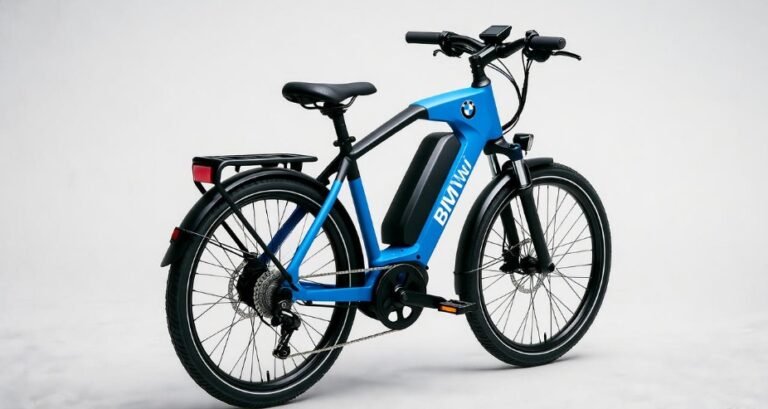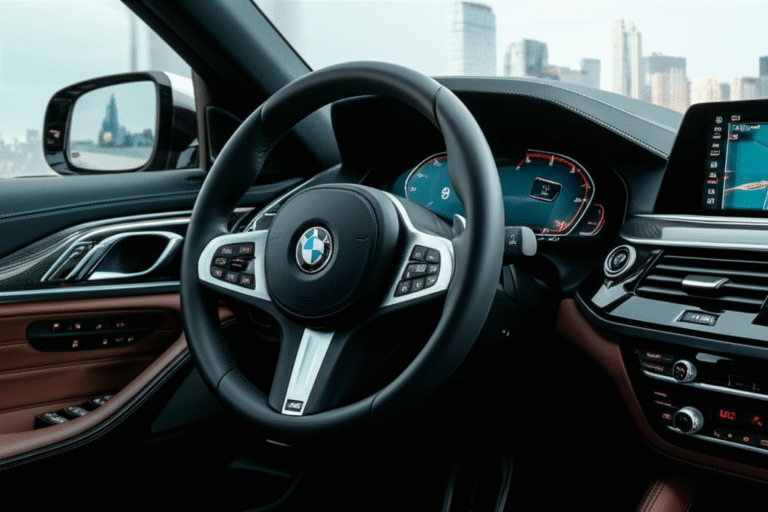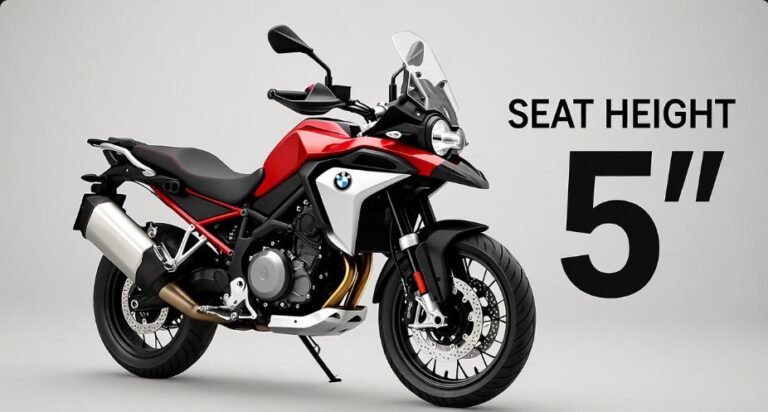BMW 7 Series Old: 6 Shocking Facts

Discover 6 shocking facts about old BMW 7 Series models that will impress any car enthusiast, revealing their enduring legacy and surprising innovations.
Key Takeaways
- Experience surprising luxury in old 7 Series models.
- Uncover groundbreaking technology from past generations.
- Appreciate timeless design elements in older 7 Series.
- Learn about the performance heritage of the 7 Series.
- Understand the collector value of classic 7 Series BMWs.
- See how these cars influenced modern luxury sedans.
When you think of luxury sedans, the BMW 7 Series often comes to mind. It represents the pinnacle of BMW’s engineering and comfort. But what about the older models? Many people assume that older cars are just that – old. They might not offer the same thrill or technological prowess as newer vehicles. However, this couldn’t be further from the truth when it comes to the BMW 7 Series. These cars have a rich history filled with innovation and surprising capabilities that still turn heads today.
Perhaps you’re considering a classic BMW, curious about its past, or simply a fan of automotive history. Whatever your reason, delving into the older 7 Series models reveals a fascinating story. You might be shocked to learn just how advanced some of these cars were for their time. We’re going to explore six surprising facts that highlight the enduring legacy and remarkable engineering of the older BMW 7 Series. Get ready to discover what makes these vehicles true automotive legends.
BMW 7 Series Old: 6 Shocking Facts You Must Know
The BMW 7 Series has always been BMW’s flagship sedan, a canvas for showcasing cutting-edge technology and unparalleled luxury. Even models from decades ago often featured innovations that wouldn’t become mainstream for years. Let’s dive into some truly shocking facts about the older generations of this iconic vehicle.
1. The E38 7 Series Introduced the First Automotive Navigation System
When you think about navigation systems in cars, you might picture the sleek touchscreen interfaces of today. But the BMW 7 Series was ahead of its time, way back in the 1990s. The third-generation 7 Series, codenamed E38, launched in 1994, brought a truly revolutionary feature to the automotive world: the first commercially available, in-car navigation system. This wasn’t just a simple GPS. It used a combination of GPS data and an inertial navigation system for accuracy, displaying maps on a monochrome CRT screen in the dashboard. Imagine driving in the mid-90s and having a car that could guide you turn-by-turn. This was a monumental leap, setting the stage for the ubiquitous navigation systems we rely on today. Many luxury brands followed BMW’s lead, but the E38 7 Series was undeniably the pioneer in this crucial automotive technology.
This advanced system was a significant technological marvel for its era. It was a clear indicator that BMW was not just building a car for luxury, but for the future. Drivers could program destinations using a console, and the system would provide audio and visual cues. While rudimentary by today’s standards, it was a testament to BMW’s commitment to innovation and driver convenience. The E38’s navigation system was a bold statement, proving that the 7 Series wasn’t just about powerful engines and plush interiors, but also about intelligent integration of technology.
2. Early 7 Series Models Featured Advanced Safety Innovations
Safety is paramount in any vehicle, and the BMW 7 Series has consistently pushed boundaries. Even older generations were remarkably forward-thinking in their safety features. For example, the E23 generation, produced from 1977 to 1986, was one of the first cars to offer an Anti-lock Braking System (ABS) as an option. ABS prevents wheels from locking up during sudden braking, allowing the driver to maintain steering control and reduce stopping distances. This was a significant advancement from the standard braking systems of the time.
Furthermore, the subsequent E32 generation (1986-1994) introduced more sophisticated safety technologies. While airbags were becoming more common in luxury cars, BMW was exploring other protective measures. The focus was on occupant protection, integrating structural improvements with active safety features. These early adopters of safety tech demonstrate a long-standing commitment by BMW to driver and passenger well-being, often exceeding government mandates of the periods in which they were produced.
Here’s a look at some safety trends across early 7 Series generations:
| Generation | Production Years | Key Safety Features Introduced or Offered |
|---|---|---|
| E23 | 1977–1986 | Optional Anti-lock Braking System (ABS) |
| E32 | 1986–1994 | Driver’s Airbag, Optional Passenger Airbag, Traction Control (ASC) |
| E38 | 1994–2001 | Standard Front and Side Airbags, Xenon Headlights, Electronic Stability Control (DSC) |
This commitment to safety not only protected occupants but also signaled a shift in automotive design, prioritizing proactive safety measures over reactive ones.
3. The 7 Series Revolutionized Interior Comfort and Connectivity
When you think of luxury, you think of comfort. The older BMW 7 Series models were masters at delivering an exceptional interior experience, often far beyond what competitors offered. For instance, the E38 generation (1994-2001) was noted for its sophisticated climate control systems, allowing for multi-zone temperature regulation. This meant driver and front passenger could set their preferred temperatures independently. Many modern cars still struggle to perfect this, but BMW was delivering it over two decades ago.
Beyond climate, the E38 also offered amenities like heated and multi-adjustable seats, often with memory functions. And it wasn’t just about comfort; it was about intuitive control. The introduction of the iDrive system in the E65 generation (2001-2008) was a watershed moment, though it was controversial at first. This system aimed to consolidate many vehicle functions (navigation, audio, climate, settings) into a single controller and display. While critics initially found it complex, it laid the groundwork for the integrated infotainment systems that define modern car interiors. This was BMW’s ambitious attempt to simplify and centralize control, a bold move for its time.
The pursuit of a connected and comfortable cabin didn’t stop there. Later older models saw advancements like integrated phone systems and enhanced audio experiences. These efforts highlight a consistent dedication to making the driving experience as refined and convenient as possible, setting benchmarks for the entire luxury automotive segment.
4. Surprising Performance from Older V8 and V12 Engines
While the 7 Series is synonymous with luxury, it has never shied away from performance. Older generations often housed formidable engines that delivered exhilarating driving dynamics. The E32 generation, for instance, saw the introduction of BMW’s V8 engine options to the 7 Series lineup, offering a potent blend of power and smoothness. But the real showstopper was the V12. The 1987 BMW 750iL (E32) featured a 5.0-liter V12 engine, producing a substantial 296 horsepower. This made it one of the most powerful and refined sedans of its time, capable of effortless acceleration and high-speed cruising.
The E38 generation continued this tradition with even more powerful V8 and V12 options. The 740i and 740iL models featured potent V8 engines, while the legendary 750iL boasted an even more advanced V12. These engines weren’t just about raw power; they were engineering marvels, known for their smooth operation and sophisticated performance. The manual transmission was even available on some V8 models, appealing to driving enthusiasts who appreciated the tactile connection to the machine. This focus on powerful yet refined powertrains cemented the 7 Series’ reputation as a true driver’s car in the luxury segment.
Here’s a quick look at some engine highlights:
- E23 (1977–1986): Inline-6 engines, known for smoothness and reliability.
- E32 (1986–1994): Introduced V8 engines and the iconic V12 in the 750iL.
- E38 (1994–2001): Further refined V8 and V12 engines, with significant power increases and the first V8 diesel in a BMW sedan.
The engineering prowess demonstrated in these older engines is a significant part of the 7 Series’ legacy, proving that luxury and performance have always gone hand-in-hand for BMW.
5. Groundbreaking Aerodynamics and Design Language
The design of the BMW 7 Series has always been a talking point, often setting trends for the brand and the industry. Older generations, while stylistically evolving, consistently incorporated advanced aerodynamic principles. The E32 generation, for instance, featured a sleeker, more rounded profile compared to its predecessors, contributing to lower drag coefficients. This wasn’t just about aesthetics; improved aerodynamics meant better fuel efficiency and a quieter cabin, especially at highway speeds.
The E38 generation continued this trend, refining the aerodynamic shape and introducing elements like flush-mounted glass and integrated bumpers. These design choices not only improved airflow but also gave the car a more cohesive and modern look for the time. BMW’s designers were not just styling a car; they were optimizing its interaction with the air, a crucial aspect of performance and efficiency that is often overlooked in older vehicles. The timeless lines of the E38, for example, are still admired today, a testament to its successful blend of form and function.
Even earlier models, like the E23, showcased thoughtful design. The “Hofmeister kink” – the distinctive curve at the base of the C-pillar – was already a signature element, contributing to the brand’s visual identity. The designers understood that a flagship sedan needed to look elegant, imposing, and forward-thinking, and they achieved this through a combination of classic proportions and subtle, yet impactful, aerodynamic advancements.
6. The 7 Series Was a Testbed for Future BMW Technologies
Perhaps the most shocking fact about older BMW 7 Series models is their role as a technological proving ground for the entire BMW brand. Many features that eventually made their way into mass-produced BMWs across all model lines debuted on the 7 Series. The aforementioned navigation system (E38) and the early iterations of iDrive (E65) are prime examples. These were not just experimental gadgets; they were robust systems designed to be integrated into the daily lives of drivers.
The E38 also saw advancements in lighting technology with the introduction of Xenon headlights, offering a brighter, more efficient light source than traditional halogen bulbs. This technology significantly improved night-time visibility, a major safety enhancement that eventually became a staple in many modern vehicles. The E65 generation, despite its controversial styling, pushed the envelope further with systems like electronic parking brakes and advanced driver assistance features that were precursors to today’s adaptive cruise control and lane-keeping assist.
BMW utilized the 7 Series as a platform to experiment and refine complex technologies, knowing that its discerning clientele would appreciate and test these innovations. This strategy allowed BMW to iron out kinks and prove the viability of new systems before rolling them out to a broader audience. This forward-thinking approach has been instrumental in BMW’s reputation for technological leadership in the automotive industry.
To understand the scope of innovation, consider this:
- E23: Early electronic systems, including onboard computers.
- E32: Introduction of V12, sophisticated climate control, advanced suspension options.
- E38: First-ever automotive GPS navigation, Xenon headlights, advanced electronic systems integration.
- E65: iDrive infotainment system, electronic parking brake, advanced driver assistance systems.
These examples clearly illustrate how the 7 Series has consistently been the spearhead for BMW’s technological evolution.
Pro Tips: Buying and Maintaining an Older BMW 7 Series
If these facts have sparked your interest in owning an older BMW 7 Series, here are some tips from a USA automotive expert:
- Thorough Pre-Purchase Inspection: Always get a pre-purchase inspection from a BMW specialist. Older luxury cars can have complex, expensive-to-fix issues.
- Specialized Maintenance: Ensure you find a mechanic experienced with older 7 Series models. They require specific knowledge and tools.
- Parts Availability: While some parts are readily available, rare components for very old models might be challenging to source.
- Documentation is Key: Look for cars with a comprehensive service history. This indicates good maintenance practices.
- Join a BMW Enthusiast Club: These communities are invaluable for advice, parts sourcing, and troubleshooting.
Owning a piece of automotive history can be incredibly rewarding, but it requires a commitment to proper care and maintenance, especially for a sophisticated car like the 7 Series.
Frequently Asked Questions About Older BMW 7 Series
Are older BMW 7 Series cars reliable?
Older BMW 7 Series models can be reliable if they have been meticulously maintained. However, they are complex vehicles, and neglect can lead to significant repair costs. It’s crucial to find a well-maintained example and budget for specialized maintenance.
What is the most sought-after older BMW 7 Series model?
Many enthusiasts favor the E38 generation (1994-2001) for its blend of classic styling, advanced features for its time, and robust engineering. The V12-powered 750iL is particularly iconic. The E32 generation is also highly regarded for its historical significance.
How much does it cost to maintain an old BMW 7 Series?
Maintenance costs for an older 7 Series can be higher than for average vehicles due to their complexity and the premium nature of the parts. Routine maintenance like oil changes and filter replacements might be comparable, but major repairs or specialized services can be expensive. Budgeting around $1,000-$2,000 per year for maintenance and potential repairs is a reasonable starting point, though highly variable.
Where can I find parts for an old BMW 7 Series?
Parts can be found through BMW dealerships (for some items), specialized BMW parts suppliers (online and in the USA), independent BMW repair shops, and online marketplaces like eBay or forums dedicated to BMW enthusiasts. Used parts from salvage yards specializing in BMWs are also an option.
Are older 7 Series BMWs good for long road trips in the USA?
Yes, older 7 Series BMWs, especially those in good condition, are excellent for long road trips. They were designed for high-speed cruising with exceptional comfort, stability, and features like advanced climate control. However, ensure the car has been thoroughly inspected and serviced before embarking on a long journey.
What makes the V12 engine in older 7 Series models special?
The V12 engines in older 7 Series models are special for their incredible smoothness, abundant torque, and the sheer engineering prestige they represent. They offer effortless power delivery, making for a supremely refined driving experience that was unmatched by most other cars of their era. It was a statement of ultimate automotive luxury and performance.
Conclusion
The older BMW 7 Series models are far more than just used luxury cars; they are significant pieces of automotive history. From pioneering navigation systems and groundbreaking safety features to the raw power of their V8 and V12 engines, these vehicles consistently pushed the boundaries of what was possible. They served as proving grounds for technologies that shaped the modern automotive landscape and continue to offer a compelling blend of comfort, performance, and style for enthusiasts today. Whether you’re drawn to their sophisticated design, their engineering marvels, or their role in BMW’s legacy, the older 7 Series generations are a testament to enduring automotive excellence.






